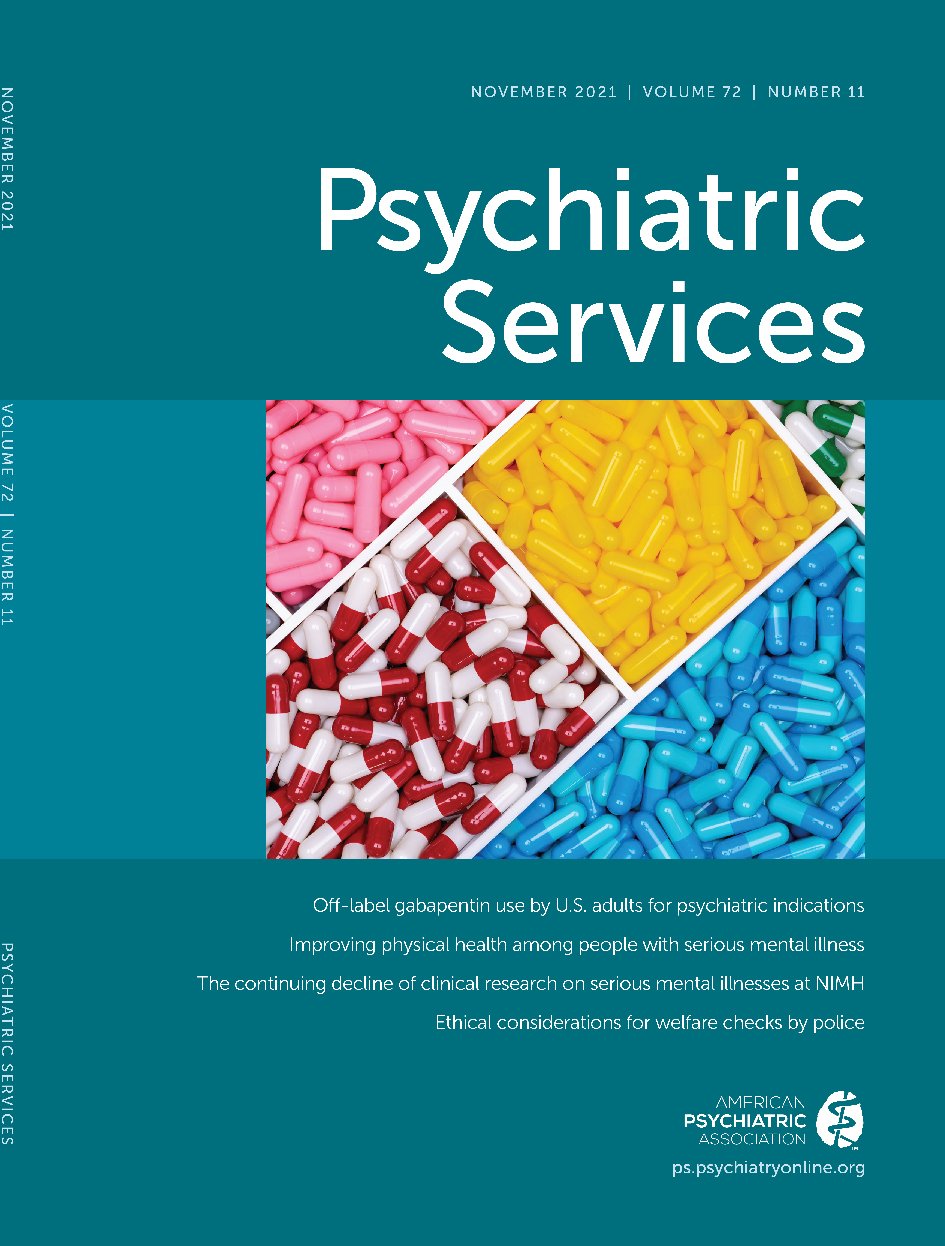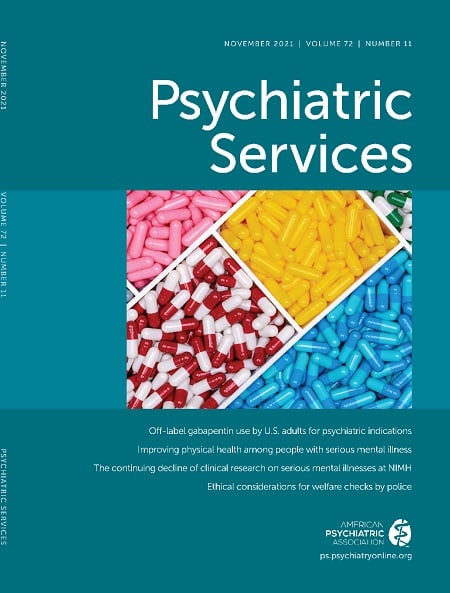Traditionally, the National Institute of Mental Health (NIMH) has maintained a relatively evenly divided research portfolio between basic research, for developing future treatments, and clinical research, for improving the treatment for individuals currently affected with mental illnesses. In 2016, when Joshua Gordon, M.D., Ph.D., was appointed as the director of NIMH, 20 members of the National Advisory Mental Health Council published an editorial claiming that only 15% of NIMH research resources were going to clinical research (
1). The editorial criticized NIMH for not supporting more clinical research that might alleviate “the terrible burden that individuals and families living with mental illness face every day.”
In fact, in 2015 Thomas Insel, M.D., the outgoing NIMH director, had conceded that the proportion of NIMH funds going to clinical research was only 10% (
2). Two years later, Dr. Insel publicly regretted this allocation of research resources. In a 2017 interview (
3) he said, “I spent 13 years at NIMH really pushing on the neuroscience and genetics of mental disorders, and when I look back on that I realize that while I think I succeeded at getting lots of really cool papers published by cool scientists at fairly large costs—I think $20 billion—I don’t think we moved the needle in reducing suicide, reducing hospitalizations, improving recovery for the tens of millions of people who have mental illness. I hold myself accountable for that.”
Immediately following Dr. Gordon's appointment, two of his psychiatric colleagues at Columbia University independently published prominent op-eds urging Dr. Gordon to use his new position to increase clinical research at NIMH (
2,
4). Using three sources of public data, we decided to assess whether he has done so.
NIH Research Condition and Disease Categorization (RCDC) Database
The RCDC database is a publicly available online database, mandated by Congress in 2008 to allow the public to “know how the NIH [National Institutes of Health] spends their tax dollars” (
5). It includes detailed research information on almost 300 diseases and conditions funded by the 27 NIH institutes and centers and is updated annually. At the time of our study, the database included information for 2016–2019 for eight NIMH-relevant diseases and conditions: schizophrenia, bipolar disorder, depression, autism, anxiety disorders, eating disorders, suicide, and homelessness. (Instructions on use of the RCDC database are included in an
online supplement to this Open Forum.)
For the years 2016−2019, NIMH research expenditures, as a percentage of the total NIMH budget, decreased for six of the eight diseases and conditions (see table in
online supplement). The diseases that suffered the greatest losses were bipolar disorder, down 25%, and schizophrenia, down 17.5%. For both diseases, the spending decreases were not only as a percentage of the total NIMH budget but also in both actual dollars and in the number of funded research grants. Research expenditures also decreased for depression by 2.5%, autism by 1.2%, and anxiety disorders by 5.5%. Expenditures increased for eating disorders from 1.0% of the total NIMH budget to 1.2%.
For the eight diseases and conditions, research on suicide was the big winner, increasing 78%, from 2.7% to 4.8% of the total NIMH budget. In 2016, at the time of Dr. Gordon's appointment, he identified suicide as a potentially promising area for research expansion (
6). By contrast, between 2016 and 2019, NIMH reduced the number of homelessness-related grants from 10 to four. Homelessness thus appears to be of relatively little interest to NIMH, despite three decades of studies reporting that at least one-third of homeless individuals have a serious mental illness (
7). In 2019, the National Institute on Drug Abuse, National Institute on Alcohol Abuse and Alcoholism, National Institute on Aging, and National Cancer Institute each funded more research grants on homelessness than did NIMH.
ClinicalTrials.gov
The second public data source we used to assess NIMH research was
www.clinicaltrials.gov. This is a Web-based resource, managed by the National Library of Medicine, that lists ongoing clinical trials. Since 2006, when journal editors began to require trial registration as a condition for publication, the listing has been relatively complete. We examined all NIMH-funded drug trials from 2006 to 2019 for schizophrenia, bipolar disorder, and major depressive disorder and found a major reduction in the number of trials for all three diseases over those years, most markedly in recent years (see table and figure in
online supplement). Thus, when 2006–2009 trials are compared with 2016–2019 trials, the number of trials for schizophrenia decreased from 28 to two; for bipolar disorder, from 14 to 0; and for major depressive disorder, from 17 to 4. Overall, there were 59 such trials in the earlier period, compared with six trials in the latter, a reduction of 90% (instructions for use of clinicaltrials.gov are included in the
online supplement).
NIMH Strategic Plan
Finally, we assessed the NIMH Strategic Plan for Research for 2020–2024, a plan intended “to communicate our priorities and help guide future mental health research efforts at the Institute” (
8). The plan is heavily weighted toward basic brain research, especially on genetics and neural circuits, with little mention of serious mental illnesses. For example, words associated with research on genetics or neural circuits occur 92 times, compared with nine mentions for serious mental illness, five for schizophrenia, one for bipolar disorder, and none for major depressive disorder. Problems associated with untreated serious mental illnesses receive only one passing mention: “Individuals with mental illnesses are disproportionately represented among the homeless and incarcerated.”
The NIMH plan also assumes that extensive basic brain research must occur before any real progress can be made on the treatment and prevention of mental disorders. Dr. Gordon made this explicit in a recent paper, “From Neurobiology to Novel Medication: A Principled Approach to Translation” (
9), in which he used the development of brexanolone as a model for future drug development. Brexanolone, developed by a drug company for postpartum depression and recently approved by the Food and Drug Administration, was made possible by basic brain research done at NIMH 35 years previously. In his paper, Dr. Gordon describes the genetic and neural circuit research on basic brain function as “a promissory note that better diagnostics and transformative treatments are to come in the future.” In an interview, he also acknowledged that this future is a long way off: “Gordon acknowledged that neither genetic research nor the study of complex circuits was likely to produce new treatments any time soon” (
10).
In 2019, NIMH issued a draft of its Strategic Plan and invited public comments. Dr. Gordon indicated that NIMH expected to receive approximately 400 comments but instead received 6,233 (
11), almost all of which were critical of the lack of clinical research and some of which included specific suggestions for such research. From the 6,233 responses, NIMH selected 102 for consideration, 39 of which were ultimately used to make changes to the plan. In carefully comparing the draft plan to the final document, we identified 330 total changes. Of these, 310 were editorial—grammatical, stylistic, and formatting edits. The other 20 were content related, such as changing the term “disparate populations” to “marginalized populations.” (A detailed description of these changes is included in the
online supplement.) NIMH did not include a single addition to clinical research from the suggestions it received.
Discussion
Regarding the original question of resource allocation at NIMH between basic and clinical research broadly defined, there appears to have been no effort made in the past 4 years to increase clinical research. On the basis of the decrease in research grants for serious mental illnesses and the decrease in clinical drug trials for schizophrenia, bipolar disorder, and major depressive disorder, there appears to have been an additional shift toward basic research. If the basic-to-clinical ratio in 2015 was 90 to 10, as Dr. Insel claimed, then the present ratio may be close to 95 to 5.
This research allocation raises fundamental questions regarding the proper function of NIMH. It was originally funded by Congress to improve the treatment of psychiatric diseases. Basic brain research is legitimately part of that mission, but the primary purpose of NIMH is to improve the treatment of diseases. Basic brain research is also done by other government-funded entities, including other NIH institutes, such as the National Institute of Neurological Disease and Stroke and the National Institute on Aging. In addition, the National Science Foundation spends $8.3 billion annually on basic neuroscience research. However, no other government-funded entities, except the U.S. Department of Veterans Affairs and the Patient-Centered Outcomes Research Institute, conduct research on the treatment of mental disorders. If NIMH does not do this research, it is less likely to get done. The Substance Abuse and Mental Health Services Administration, for example, is charged with the delivery of mental health services, not research.
It should also be noted that during his first 4 years as NIMH director, Dr. Gordon has had an excellent opportunity to correct the basic-clinical imbalance in the research portfolio. From 2016 to 2020, as part of the congressional budget increases, NIMH received $420 million new dollars. These funds could have been invested in clinical studies. Instead, except for $46 million for additional suicide research, almost all the new money was used to fund lower-ranked research grants that would not ordinarily have been funded without the increased funds. This, of course, further exacerbated the portfolio skew toward basic research.
Critics of the current NIMH research portfolio have pointed to its lack of diversification. As Lewis-Fernández et al. (
1) noted, “Publicly funded government agencies are custodians of research for the public good. A diversified research portfolio, balanced between longer- and shorter-term payouts, has the advantage of demonstrating to stakeholders a present and steady payoff in improvements to routine [psychiatric] practice.” For example, the NIMH emphasis on genes and neural circuits as the path to treatment improvement neglects other currently promising paths, such as inflammation; immune modulation; neurohormones, such as estrogen; and the microbiome. The mistake of placing disproportionate resources on genetics was also recently demonstrated by publications on the genetics of depression (
12) and schizophrenia (
13), which suggest that the research results to date have been, at best, disappointing.

